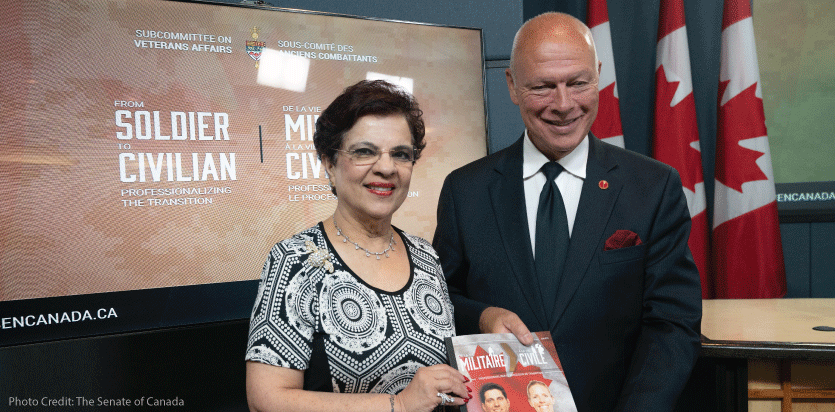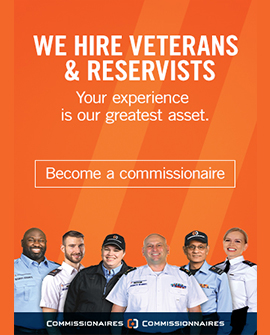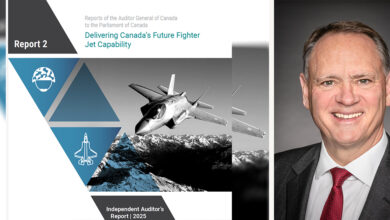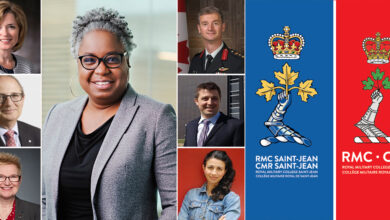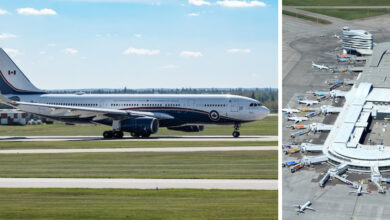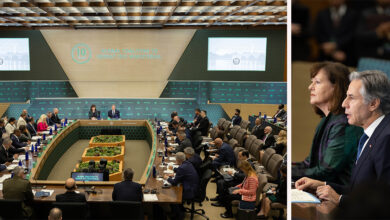Today’s News
Senate subcommittee releases report on transitioning from soldier to civilian
On June 13 the Senate subcommittee released a report regarding the current system in place for CAF personnel transitioning out of the military. The report included 13 recommendations on how to improve the transition process.
Currently, when a CAF member releases, the military member needs to wait a period of time before they will receive their pension. Senator Jean-Guy Dagenais believes that someone who has served their country should not have to wait to receive any payment.
“It’s so important because if you (veterans) don’t receive the money, then the stress begins to set in and it’s not a good time,” said Senator Dagenais. “It’s not normal. Normally when you’re prepared to take your pension from the military, you have completed all paper forms, and you are ready to receive your pension.”
During the press conference, Senator Dagenais and Senator Mobina Jaffer proposed issuing all Veterans an ID card which would have an ID number unique to each Veteran, and the number of years served. The goal being, whenever a veteran needed to access a service or visit a Veterans Affairs office, the member would be quickly identified in the system.
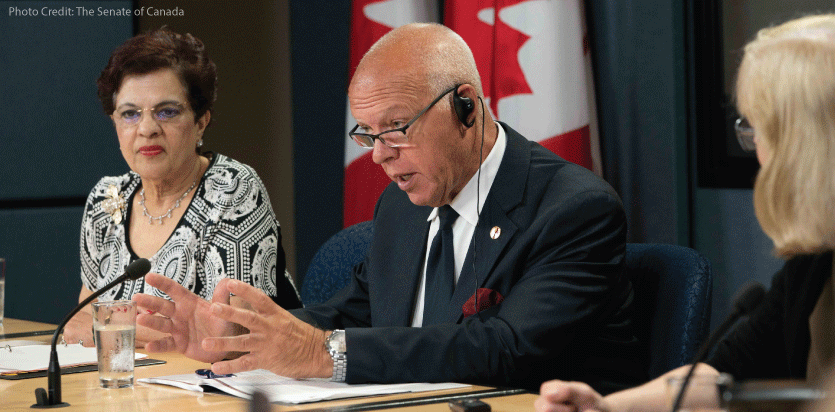
In addition to the ID cards, Senator Dagenais said it is also important to have central locations and reference points, so Veterans know where they’re going or who they’re calling when they need access to services.
He goes on to explain, when a veteran calls VAC and does not have a direct point of contact, the call goes to an automated voice system, where the veteran is told to push a certain number to be connected to the service the veteran is looking for, the call ends up being routed to a mailbox with the veteran not having the opportunity to speak with anyone.
Senator Dagenais explains with their recommendation, “When you call the office, you have a phone number. You have your ID, and you’ll receive your information right now.”
The Senate Committee noted because Veterans receive medical care with CAF doctors while serving, when they transition out the need for continuance of care for injuries or an OSI can make a veteran vulnerable when it comes to finding a civilian doctor.
Senator Dagenais proposed making this transition easier for the veteran by having personal medical records follow each Veteran. Each file would be accessed through the recommended Veteran ID cards.
“We can help you. You have your doctor in the military, you will have a doctor in your civilian life. We recommend the transfer of all a veteran’s information to your doctor, especially if you use special medication, the files would follow you,” said Senator Dagenais.
As for when these recommendations will take effect, Senator Dagenais remains unsure but said the Government of Canada should make the changes immediately.
“If we don’t put pressure on the Government. They say, ‘Okay, we’ll study this.’ No, no, it’s not a time to study. You have the report. General Vance came into the committee, Minister O’Regan came to the committee, and they understand it’s not a time to study. It’s time to apply right now. They understand the situation. They approve the report and the recommendation of our committee. It’s not a time to take one or two years, right now,” said Senator Dagenais.
RECOMMENDATIONS
Recommendation 1
That the Canadian Armed Forces ensure that no member is released from the Canadian Forces until all benefits and services from all sources, including the Canadian Forces pension and Veterans Affairs benefits and services, are in place.
Recommendation 2
That Veterans Affairs Canada make every effort to simplify the administrative complexity inherent in the delivery of its programs and address the confusion created by having several programs with similar objectives.
Recommendation 3
That Veterans Affairs Canada ensure that a maximum ratio of 25 veterans per case manager is maintained by regularly monitoring workloads and staffing levels of front-line staff.
Recommendation 4
That the Department of National Defence and Veterans Affairs Canada create “release centres,” where decisions can be made with respect to transition supports and where releasing members have greater access to supports and services from Veterans Affairs Canada. The Subcommittee also recommends that consideration be given to co-locating these centres on military bases and/or with recruitment centres, with staff from the new Canadian Armed Forces Transition Group.
Recommendation 5
That the Canadian Armed Forces and Veterans Affairs Canada collaborate to ensure that before a member is released, the individual has a complete file ready, which includes their service record and history of medical treatment and which will be easy to access by VAC should the veteran need to access the department’s services at a later time.
Recommendation 6
That a navigator service be put in place, both within the Canadian Armed Forces and the Department of Veterans Affairs, and be staffed with current and/or retired CAF members, to guide and support military personnel through the release process, and afterward, if they need to access VAC services later in time.
Recommendation 7
That one easy, navigable, common Web portal be created containing all relevant information on the benefits and services from Veterans Affairs and the Canadian Armed Forces.
Recommendation 8
That the Canadian Armed Forces and Veterans Affairs Canada collaborate to issue an identification card to members prior to release that includes a recognition of military service and a VAC identification number to allow either the veteran or VAC to follow up.
Recommendation 9
That the Canadian Armed Forces and Veterans Affairs Canada collaborate to streamline their medical approval processes to ensure that veterans are not required to undergo duplicate medical determinations or tests.
Recommendation 10
That the Canadian Armed Forces and Veterans Affairs Canada immediately determine and establish competitive compensation rates for mental health professionals to support CAF members and veterans.
Recommendation 11
That the Canadian Armed Forces and Veterans Affairs Canada collaborate to ensure that all releasing members and veterans can access career counselling in order to determine a new objective in life and the means to achieve it.
Recommendation 12
That the Department of National Defence and Veterans Affairs Canada seek more formal arrangements, through contracts or memoranda of understanding, to give veterans priority in accessing health, education and social services provided by provincial and territorial governments.
Recommendation 13
That the Canadian Armed Forces and Veterans Affairs Canada develop linkages with local police services to support the police in their encounters with veterans and serving members, and to ensure that veterans and serving members who interact with police are referred to appropriate VAC services.
To read the report in its entirety, click here.


